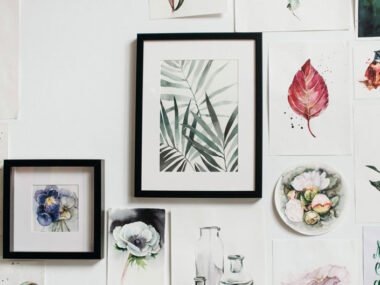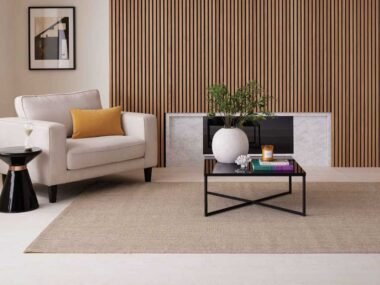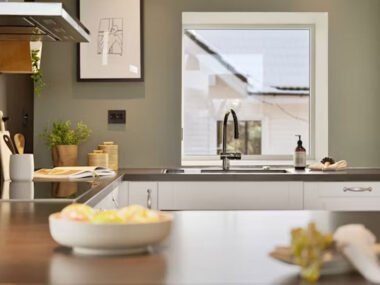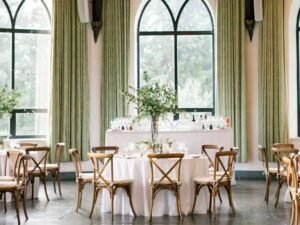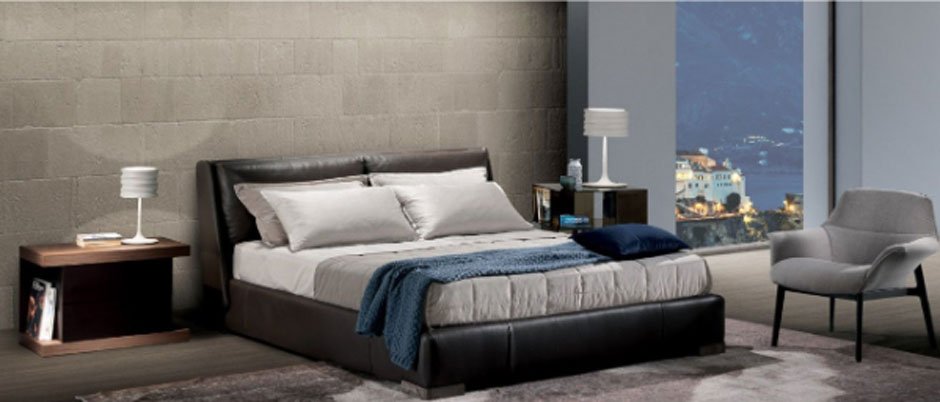
Designing an italian bedroom involves combining classical elegance with a calm and inviting atmosphere. This style draws from Italian architecture, natural landscapes, and artisanal traditions, often blending old-world charm with modern comfort.
Color schemes typically feature warm, muted tones such as cream, terracotta, soft grey, or olive green. These create a restful setting and enhance natural light. For flooring and furniture, materials like wood, stone, or wrought iron bring authenticity and a grounded aesthetic.
Furnishings should reflect quality craftsmanship, with carved headboards, arched mirrors, or curved dressers adding character. Upholstered chairs or benches in linen or velvet introduce texture and understated luxury. High thread-count bedding and layered fabrics also contribute to visual richness.
Decorative elements such as framed art, ceramic accessories, and ambient lighting complete the setting. A well-designed italian bedroom prioritizes beauty, balance, and functionality, offering a peaceful space that reflects timeless design values and personal comfort.
Defining the Italian bedroom aesthetic: Traditional vs contemporary influences
The italian bedroom aesthetic can be defined by its graceful blend of tradition and contemporary interpretation. Traditional styles are rooted in classical architecture and Renaissance influence, often showcasing carved wood furniture, ornate detailing, and warm earthy color palettes. Fabrics like velvet and damask, combined with wrought iron accents, lend a sense of timeless elegance and romantic charm.
In contrast, contemporary italian bedroom designs favor clean lines, minimalist forms, and a neutral color scheme. Modern furniture pieces often highlight smooth textures, muted tones, and innovative materials such as glass or lacquered finishes. Despite this modern simplicity, the focus remains on comfort and refinement.
Many interiors today combine elements from both styles, creating a transitional look that preserves heritage while embracing current trends. Whether leaning traditional or modern, an italian bedroom consistently prioritizes balance, natural materials, and high-quality craftsmanship, resulting in a space that feels both personal and enduring.
Common materials used in Italian bedroom furniture and finishes
Italian bedroom furniture is known for its fine materials, reflecting craftsmanship and elegance. Solid wood is a foundation in many designs, with walnut, cherry, and oak among the most preferred. These woods are appreciated for their strength, durability, and warm tones that suit both classical and contemporary interiors.
In addition to wood, metal is used for bed frames, decorative accents, and lighting fixtures. Wrought iron and brushed brass often appear in traditional designs, adding a touch of sophistication and historical character. For more modern styles, aluminum or polished steel contributes a sleek, minimalist feel.
Finishes vary depending on the desired look. Hand-applied stains and lacquers emphasize natural grain, while painted or distressed finishes offer a rustic charm. Upholstered elements—such as headboards or benches—commonly feature velvet, linen, or leather to enhance texture and comfort.
These material choices help define the overall ambiance of an italian bedroom, combining beauty with enduring quality.
Bed frame types and headboard styles in Italian design
In an italian bedroom, the bed frame plays a central role in defining both structure and atmosphere. Traditional designs often feature ornate wooden frames with intricate carvings, turned posts, or hand-finished details that reflect classical Italian artistry. These bed frames bring warmth and elegance, creating a timeless focal point in the room.
Contemporary styles lean toward minimalist profiles with clean lines and subtle finishes. Metal bed frames in wrought iron or polished steel are also popular, offering a sleek yet durable alternative that complements modern interiors. These designs prioritize space-saving and visual lightness while maintaining stability.
Headboards add personality and depth to the overall layout. Upholstered headboards in linen, leather, or velvet enhance comfort and introduce texture. Meanwhile, wooden headboards with arched or paneled shapes provide a traditional aesthetic. Whether decorative or understated, these features help define the tone of an italian bedroom, combining function with refined visual harmony.
Storage solutions: Closets, armoires, and integrated cabinetry
Effective storage solutions are essential for maintaining order and enhancing comfort in any living space. Closets, armoires, and integrated cabinetry offer practical ways to manage belongings while contributing to the overall design. Selecting the right combination depends on room size, personal needs, and aesthetic goals.
Closets provide built-in organization with hanging space, shelves, and drawers. They can be customized with interior fittings such as pull-out baskets or shoe racks to increase functionality. For rooms with limited space, sliding doors offer a space-saving alternative to traditional hinged options.
Armoires serve as versatile, free-standing storage units that add character and flexibility. They are ideal for clothing, linens, or miscellaneous items, and often feature decorative details that complement traditional or transitional styles.
Integrated cabinetry blends seamlessly into the room’s architecture. It offers a clean, tailored look and maximizes vertical space. This solution is especially beneficial for small rooms where efficient use of every surface is important.
Importance of lighting: Functional and ambient options
Lighting plays a critical role in shaping the atmosphere and functionality of any room. Well-planned lighting enhances visibility for daily tasks while also contributing to comfort and mood. A balance between functional and ambient options helps create a flexible and inviting environment.
Functional lighting includes ceiling fixtures, reading lamps, and under-cabinet lights. These elements are designed to support specific activities such as cooking, working, or dressing. Bright, targeted illumination reduces eye strain and improves overall usability of the space.
Ambient lighting offers a softer glow that defines tone and adds warmth. Wall sconces, floor lamps, and dimmable ceiling lights contribute to a relaxed and layered effect. Natural light from windows can also support ambience during daytime hours.
Combining both types allows for adaptable settings throughout the day. Careful placement and appropriate intensity ensure the space remains both practical and comfortable. Thoughtful lighting design improves daily living and enhances the room’s aesthetic appeal.
Upholstery and textiles commonly used in Italian bedrooms
Upholstery and textiles in Italian bedrooms reflect a strong emphasis on comfort, luxury, and timeless aesthetics. High-quality fabrics are chosen not only for their appearance but also for their durability and texture. Common selections include velvet, linen, cotton, and silk, each offering a unique tactile and visual experience.
Velvet is favored for its rich texture and ability to create a refined atmosphere. It is often used on headboards, accent pillows, and benches. Linen, by contrast, provides a breathable and natural look, making it ideal for warmer climates or relaxed interiors.
Silk and satin appear in more formal italian bedroom settings, adding luster and elegance through drapery, bedding, or cushions. Quilted fabrics or embroidered details are also common, adding depth and character to the space.
Textile choices are typically coordinated with furniture finishes and wall colors to create a cohesive design. Their role is not only decorative but essential to comfort and ambiance.
Flooring and wall treatments: Tiles, wood, and finishes
Flooring and wall treatments play a significant role in shaping the ambiance and character of a bedroom. In Italian interior design, these elements reflect a balance between tradition and refined simplicity, often emphasizing texture, natural materials, and timeless appeal.
Tiles are frequently used, especially in warmer climates. Ceramic or terracotta options add rustic charm and cooling comfort underfoot. Their finishes may be matte, glazed, or hand-painted, offering visual interest and durability.
Wood flooring is equally prominent, lending warmth and elegance to the space. Options like oak, walnut, or chestnut are chosen for their rich tones and resilience. Finishes may include polished, brushed, or distressed treatments depending on the desired style—modern or classical.
Wall treatments vary from textured plaster and painted finishes to wood paneling or stone accents. These surfaces support both visual depth and tactile appeal. Coordinated thoughtfully, they enhance the overall composition of a well-designed bedroom and contribute to lasting comfort.
How to optimize space without compromising style
Optimizing space without compromising style requires careful planning and thoughtful design choices. Begin by selecting furniture that serves multiple purposes, such as storage beds, extendable tables, or ottomans with hidden compartments. These solutions provide functionality while maintaining an elegant appearance.
Choose pieces with clean lines and light profiles to prevent the room from feeling crowded. Mirrors, glass surfaces, and transparent materials can enhance visual openness, making compact areas appear more spacious without sacrificing aesthetic appeal.
Finally, maintain balance by avoiding excessive decoration. Instead, focus on a few well-chosen items that reflect personal style and keep the environment uncluttered. Through smart organization and refined design, it is possible to achieve both practicality and beauty in limited spaces.
Selecting accessories and decor to complete the Italian bedroom look
Selecting accessories and decor is essential to capturing the refined elegance of an Italian bedroom. The goal is to enhance the space with thoughtful details that reflect warmth, heritage, and balance without overwhelming the overall design.
Start with textiles—layered curtains, plush area rugs, and embroidered cushions add depth and visual softness. Choose fabrics such as velvet, linen, or cotton in warm, muted colors that complement the room’s palette. These touches contribute to a calm and welcoming atmosphere.
Decorative objects should emphasize craftsmanship and natural beauty. Consider ceramic vases, wrought iron candle holders, or framed artworks inspired by classical or pastoral themes. Mirrors with ornate or antique frames can create a sense of light and openness.

